|


Keeping Lionfishes and their Scorpaeniform Kin
Part : Information on Families and Species
By Anthony Calfo and Robert Fenner
In
Part one, we looked at the natural history, behavior and captive husbandry
of the Scorpaeniforms as a family. Part two is a pictorial look at some of
the perennial favorites as well as a couple of oddities from the family.
Many of these fishes make fantastic additions to the appropriately sized home
aquarium, and given proper diet and care they will live long healthy lives.
Just watch out for the spines!
|
Rhinopias
live up to the etymology of their name, from the Greek "rhinos" – nose,
and "ops" – appearance. Indeed, these fishes are all nose (and mouth!).
They occur in the most amazing range of colors and ornate extensions.
Photo by Anthony Calfo
|
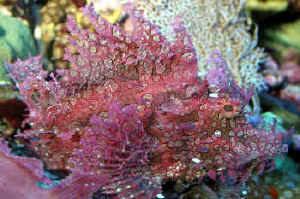
|
|
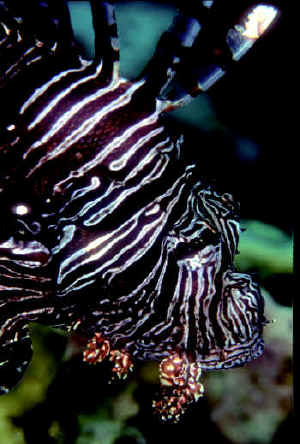
|
Pterois volitans (Linnaeus 1758) is the Lionfish to most folks. Commonly referred to in scientific
literature as the "Red" Lionfish, specimens range from reddish to nearly
black banded in color with creamy white alternating margins. Regardless
of body color, Red and Black Lionfishes are the same species. They are
the most commonly displayed and sold member of the family: the
quintessential marine aquarium specimen, with their long flowing
pectoral and dorsal fin rays.
Photo by Robert Fenner
|
|
Pterois
volitans has a very broad
geographic distribution including the Indo Pacific, Australia, Japan,
Micronesia and the Atlantic coast of the United States… what?!?
Colonies on the Atlantic coast of this Pacific species? <sigh> Yes, the
unlawful introduction of this species to US coastal waters seems to have
led to the tentative establishment of the species, now being caught as
far north as New York in the summer (pers. com. Joe Yaiullo).
Photo by Robert Fenner
|
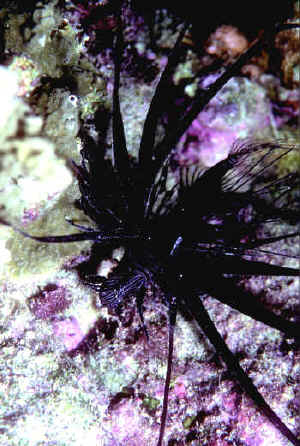
|
|
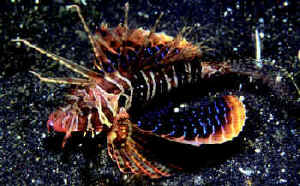
|
Several new
species of Lionfish have been trickling into the aquarium trade in
recent years, including some remarkable yellow varieties.
Photo by Robert
Fenner
|
|
The Zebra Turkeyfish is a commonly imported dwarf Lionfish and is one of
the best species for captivity. They are adaptable to a wide range of
habitats and food offerings. This so-called "dwarf" Lionfish approaches
10" (25 cm.) at adulthood and can be aggressive towards conspecifics. We
recommend only one specimen per tank.
D. zebra has spawned in captivity.
Photo by Robert
Fenner
|
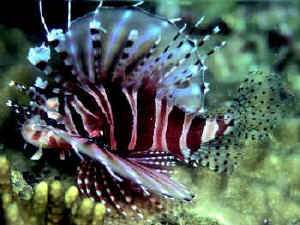
|
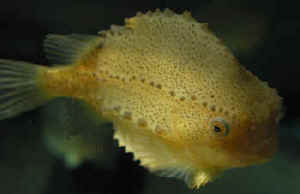
|
Cyclopterus lumpus (Linnaeus 1758 - sub-family
Cyclopterinae), the Lumpsucker, is a rather "uncharacteristic"
scorpaeniform fish. This harmless temperate species is not likely to be
kept by aquarists, but is in favor with public aquariums and fisheries.
They readily breed in captivity and are shared among zoological
institutions. Male Cyclopterid flesh and female roe (caviar) are of
commercial value for human consumption.
Photo by Anthony Calfo
|
|
Ablabys taenianotus (Cuvier 1829), the Cockatoo
Waspfish, is perhaps the most common Tetrarogid species observed in the
aquarium trade. Imports to the USA may come from Indonesia or the
Philippines. With growth to about 6"/15 cm., this potently venomous,
inactive species has little appeal beyond novelty.
Photo by Anthony Calfo
|
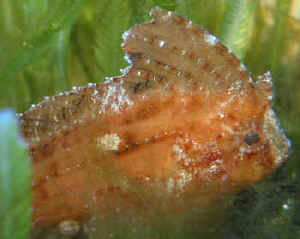
|
|
|
